Most recent cars have a nice feature called a Tire Pressure Measurement System (TPMS), which warns you when your tires are low on air. My previous car, which was a Honda Civic like my present one, would automatically reset the warning after I inflated the tires and drove a little way. The current one, a 2019 model with a lot more tech, requires a manual reset which is almost impossible to figure out. I don’t know why the tech is moving backwards. If it were obvious how to reset it, it wouldn’t be a big deal, but Honda has no idea how to make a decent user interface.
For starters, the owner’s manual doesn’t say you have to do anything after you see the warning and inflate the tires. The first time this happened to me, I thought something was broken and had a service shop look at it. When it happened last week, I knew that I’d have to reset it, in spite of the absence of information in the manual. I checked some websites and videos and discovered that there are many kinds of Civic, even within the same model year, with seriously different ways of resetting. None of them matched my car. I’m a computer guy, so I was able to figure it out after a lot of trial and error, but if it gave me that much trouble, most people won’t be able to do it at all.
In case your Civic has a dashboard like mine, here’s how it works for me.
First, do you have controls on the left side of your steering wheel that look like this? If so, keep reading.
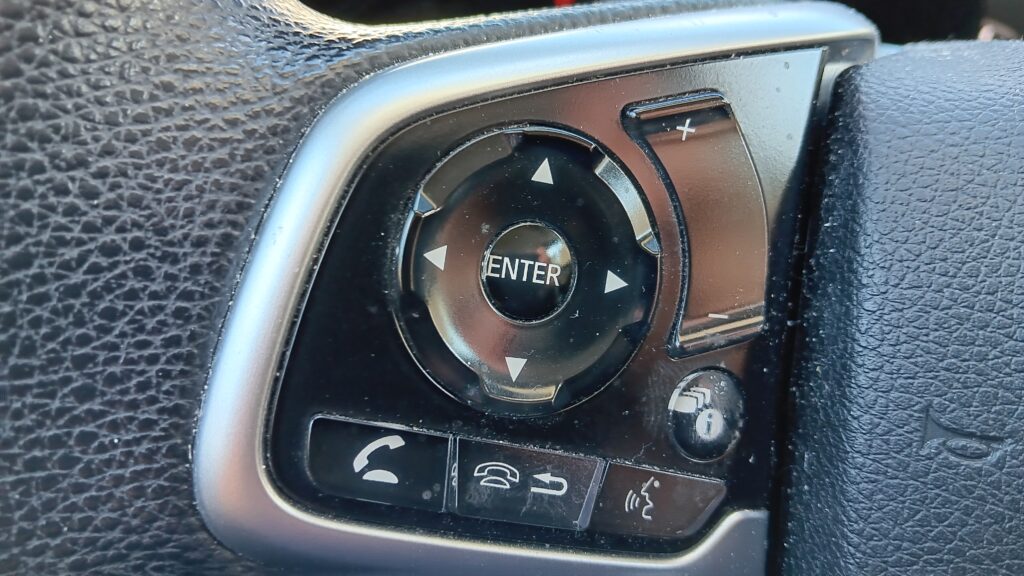
If you’ve inflated your tires, are still seeing the warning, and want to get rid of it, you need to have your car stopped and in Park to do the following. You can either have the engine running or turn the ignition key to battery power. Press the button with an “i” in a circle, just above the voice button. This will show you several icons; you can navigate among them with the right and left buttons around the “Enter” button. Bring the icon that looks like a gear to the center.
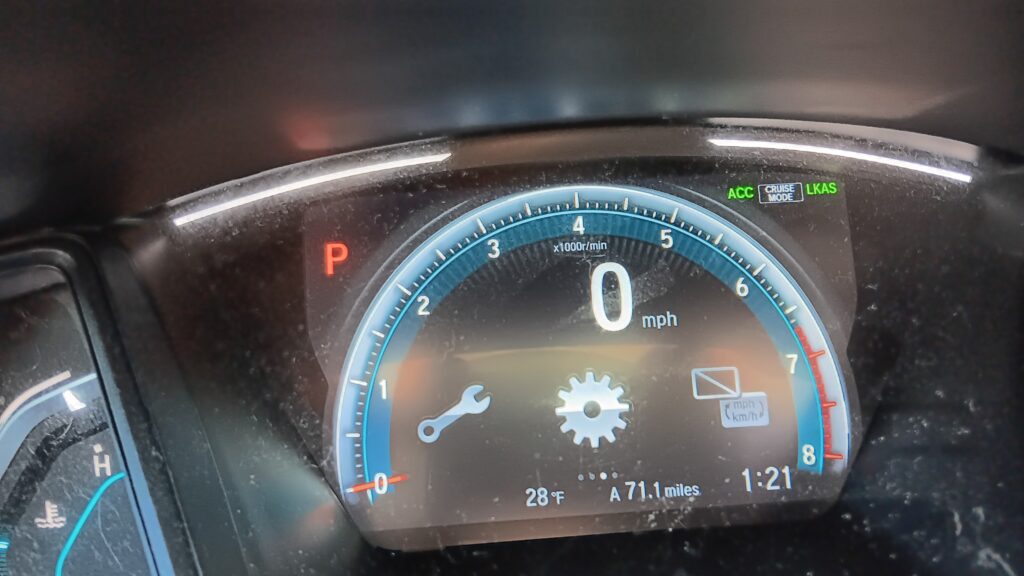
Press the “Enter” button, this will take you to the “Maintenance Settings” display. Press “Enter” again, and you’ll see a display for “TPMS Calibration.”
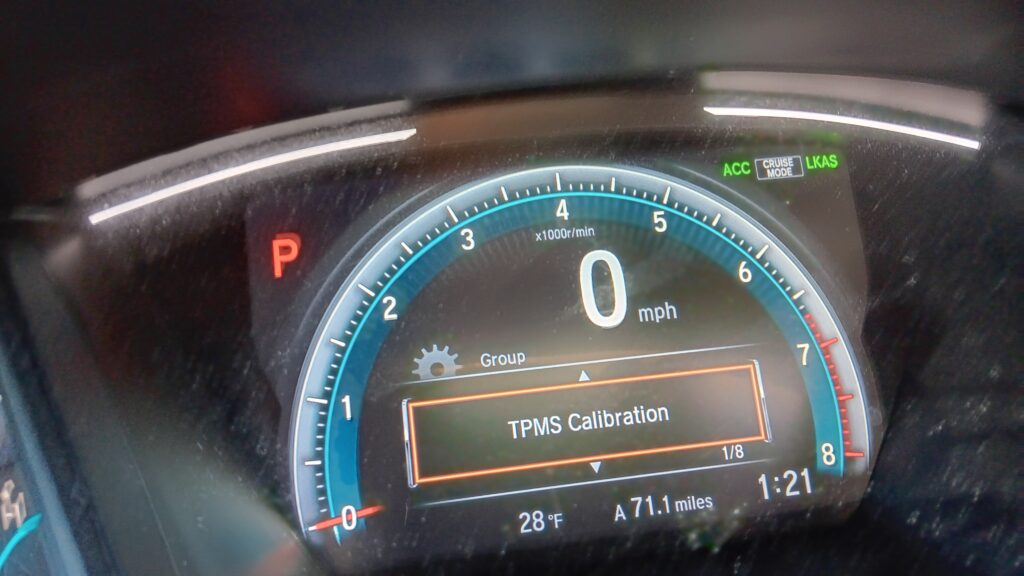
Press “Enter” once again and you’ll now see those words above “Cancel” in a rectangle.
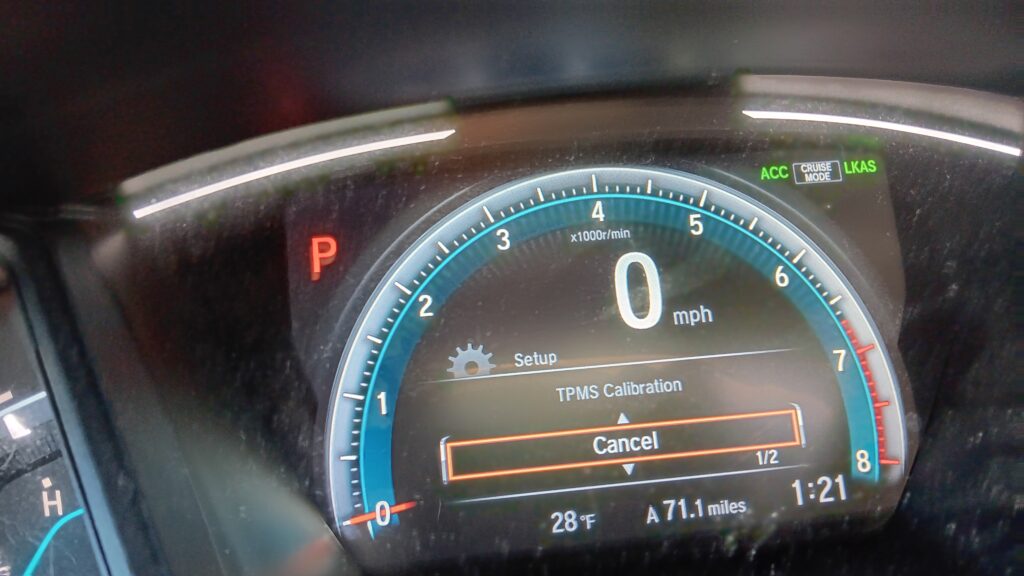
The next step was the least obvious for me. You need to press the down arrow below “Enter.” Now you’ll see the word “Calibrate” on the dash instead of “Cancel.”
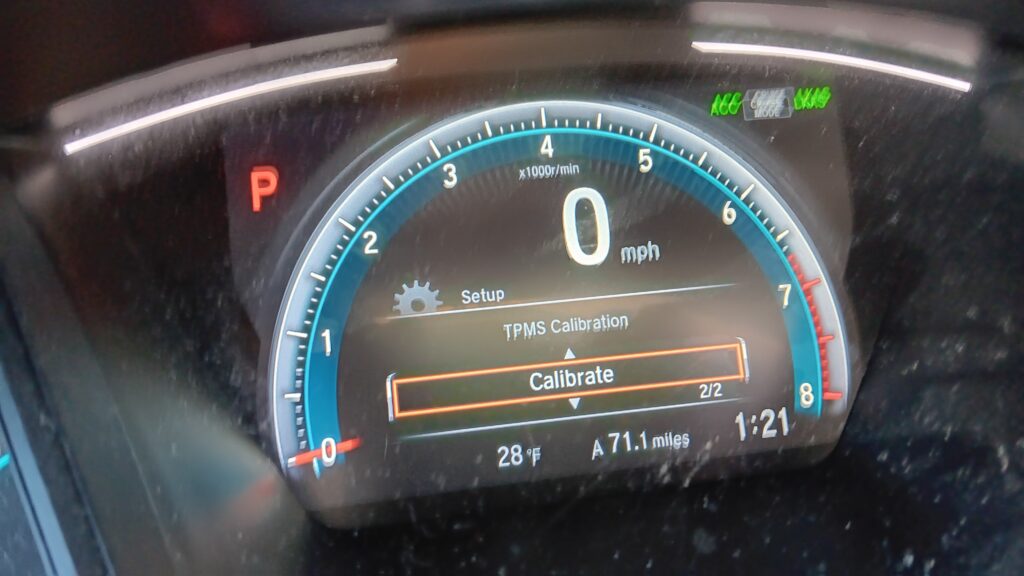
Press “Enter,” and calibration should start. Most websites say you have to drive for a while at a moderate speed for calibration to complete. With me, it happened almost immediately. Your mileage may literally vary.
How is any driver with average technical skills supposed to figure that out? Maybe it’s not in the manual because the writers couldn’t figure it out either.
Car makers don’t understand user interface design. A good UI is especially important on a vehicle, where you have to do things quickly and with a minimum of distraction. The TPMS issue is merely annoying, since drivers will be stuck with the warning on, obscuring other useful information. Other cars are worse. When I last went car shopping, I looked at another Honda’s dashboard and declined a test drive, it was so ridiculously complicated to use. The higher-priced models, which you’d think would aim for a better standard, are often worse because they pack so many features into an incomprehensible system of controls.
One of the worst is the ads which Jeep shoves at drivers through its “infotainment” system. When they stop their vehicles, possibly to fix some problem, the display repeatedly demands that they “purchase peace of mind” with an “extended care premium plan.” Does Jeep think the income (if any) from selling these plans will make up for the damage to its reputation?
Here are a few articles discussing the horrors of modern car user interfaces. Some of these articles are years old, but the interfaces haven’t improved since then.
- Why Does Every Car Infotainment System Look So Crappy? (Lifehacker)
- Automobile Dashboard Technology Is Simply Awful (Scientific American)
- When UI Design Is Dangerous: Car Technology Is Distracting Us All (Fast Company)
I have a 2016 Toyota Camry that I’ve been determined to keep, and keep running, as long as possible. Your post confirms for me that I’m making the right decision. I wish car manufacturers could make all of their user interfaces as intuitive as back-up cameras!
Several – probably about 20 by now – years ago, I had a coworker whose car had a DVD-player and screen mounted in the center dash – so you could play movies while driving. IMHO, that’s one of the most unsafe designs I’ve ever seen. Movie players in the rear seats is one thing – but drivers don’t need more distractions.